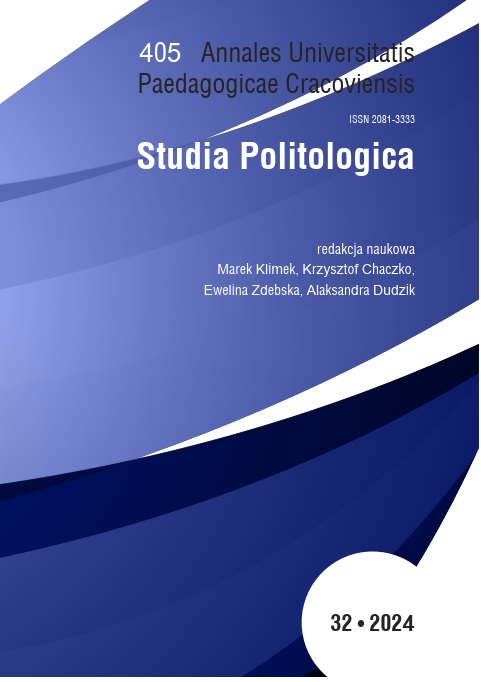Educational assistance for Ukrainian refugee children and youth – a current multidimensional reality
Pomoc edukacyjna dla ukraińskich dzieci i młodzieży uchodźców – aktualne, interdyscyplinarne problemy
DOI:
https://doi.org/10.24917/20813333.32.8Słowa kluczowe:
educational assistance, refugees, inclusive education, education for peace, conflict, social integration, well- being, pomoc edukacyjna, edukacja włączająca, edukacja dla pokoju, konflikt, integracja społeczna, dobrostanAbstrakt
The war in Ukraine triggered one of the fastest- growing displacement and humanitarian crises on record, pushing millions into internal displacement and abroad to neighboring EU countries in search of safety. According to the study conducted, the most affected areas in the Republic of Moldova, with an impressive number of Ukrainian refugees, where humanitarian intervention is required, are those on the border with Ukraine. The most affected are children and women. The safety and well- being of children are a major concern in the context of armed conflict, as they are often among the most vulnerable to the psychological and social impact of war. Separation from family and friends becomes a painful reality for many children who leave their homeland while their fathers or brothers stay behind to defend it. This dislocation generates intense feelings of loss and uprooting, amplifying emotional stress. In addition, the uncertainty about the future and the constant fear of violence contribute to the development of deep trauma, which can have a long- term impact on children’s mental health and their ability to adapt. From a psychological perspective, these children and youth are at increased risk of developing anxiety disorders, depression, or post- traumatic stress, being affected by the instability of the environment and the feeling of insecurity. Separation from loved ones and loss of Essentials social connections diminish the sense of safety and belonging, critical factors for harmonious development. Socially, breaking away from the community of origin and integrating into a New environment can generate additional difficulties. Refugee children may encounter language, cultural, or educational barriers, which affect their adaptation and social development. In this context, it becomes essential to implement psychosocial support measures, which include counseling, inclusive educational programs, and initiatives to rebuild the sense of belonging and stability. The article explores the multidimensional impact of war on children, high lighting the need for integrated and personalized approaches to support their resilience and facilitate their social and emotional integration. It also highlights key research dimensions for successfully integrating refugee children and young people into the national socio- cultural environment. The results of the indicators associated with psychological and educational aspects are analyzed. Based on the needs assessment, activities were organized for refugee children and Young people that would contribute to improving their well- being and psychological balance. These activities included: psycho- therapeutic sessions with the psychologist; recreational activities with the teacher; and recreational activities organized in collaboration with parents, the psychologist, and the teacher; opportunities to participate in creative centers (theatre, choir, dance, etc.); cultural socialization activities; excursions; participation in Romanian language courses; information on online safety, cyberbullying, gender stereotypes, and gender violence, as well as the ways to cope with them.
Wojna w Ukrainie wywołała jeden z najszybciej rozwijających się kryzysów przesiedleń i kryzysów humanitarnych w historii, zmuszając miliony ludzi do przesiedleń wewnętrznych i emigracji do sąsiednich krajów UE w poszukiwaniu bezpieczeństwa. Zgodnie z przeprowadzonym badaniem, najbardziej dotknięte obszary w Republice Mołdawii, z imponującą liczbą ukraińskich uchodźców, gdzie wymagana jest interwencja humanitarna, to te na granicy z Ukrainą. Najbardziej dotknięte są dzieci i kobiety. Bezpieczeństwo i dobro dzieci stanowią poważny problem w kontekście konfliktu zbrojnego, ponieważ często należą one do najbardziej podatnych na psychologiczne i społeczne skutki wojny. Rozłąka z rodziną i przyjaciółmi staje się bolesną rzeczywistością dla wielu dzieci, które opuszczają ojczyznę, podczas gdy ich ojcowie lub bracia pozostają, aby jej bronić. To przemieszczenie generuje intensywne uczucia straty i wyrwania z korzeniami, wzmacniając stres emocjonalny. Ponadto niepewność co do przyszłości i ciągły strach przed przemocą przyczyniają się do rozwoju głębokiej traumy, która może mieć długoterminowy wpływ na zdrowie psychiczne dzieci i ich zdolność do adaptacji. Z psychologicznego punktu widzenia, u tych dzieci i młodzieży występuje zwiększone ryzyko wystąpienia zaburzeń lękowych, depresji lub zespołu stresu pourazowego, gdyż są one dotknięte niestabilnością otoczenia i mają poczucie niepewności. Separacja od bliskich i utrata podstawowych więzi społecznych zmniejszają poczucie bezpieczeństwa i przynależności, które są czynnikami krytycznymi dla harmonijnego rozwoju. Społecznie, oderwanie się od społeczności pochodzenia i integracja z nowym środowiskiem może generować dodatkowe trudności. zajęcia z nauczycielem; i zajęcia rekreacyjne organizowane we współpracy z rodzicami, psychologiem i nauczycielem; możliwości uczestnictwa w centrach twórczych (teatr, chór, taniec itp.); zajęcia socjalizacji kulturowej; wycieczki; udział w kursach języka rumuńskiego; informacje na temat bezpieczeństwa online, cyberprzemocy, stereotypów płciowych i przemocy ze względu na płeć, a także sposobów radzenia sobie z nimi.
Pobrania
Opublikowane
Numer
Dział
Licencja
Redakcja przyjmuje do druku teksty oryginalne, wcześniej niepublikowane. Treść czasopisma jest dostępna na licencji Creative Commons (CC-BY-NC-ND 3.0 PL)
Licencja ta zezwala na wykorzystanie materiałów opublikowanych w czasopiśmie w celach niekomercyjnych np. komentarza, krytyki, informacji, archiwizacji, nauczania lub prowadzenia badań, z poszanowaniem aktualnie obowiązującego prawa autorskiego (ustawa z dnia 4 lutego 1994 r. o prawie autorskim i prawach pokrewnych Dz.U. 1994 nr 24 poz. 83 z poźn. zm.). Zgodnie z wymogami licencji, konieczne jest dokładne podanie źródła cytowania lub parafrazowania oraz zachowanie tekstu w oryginalnej postaci (zakaz tworzenia utworów zależnych).

